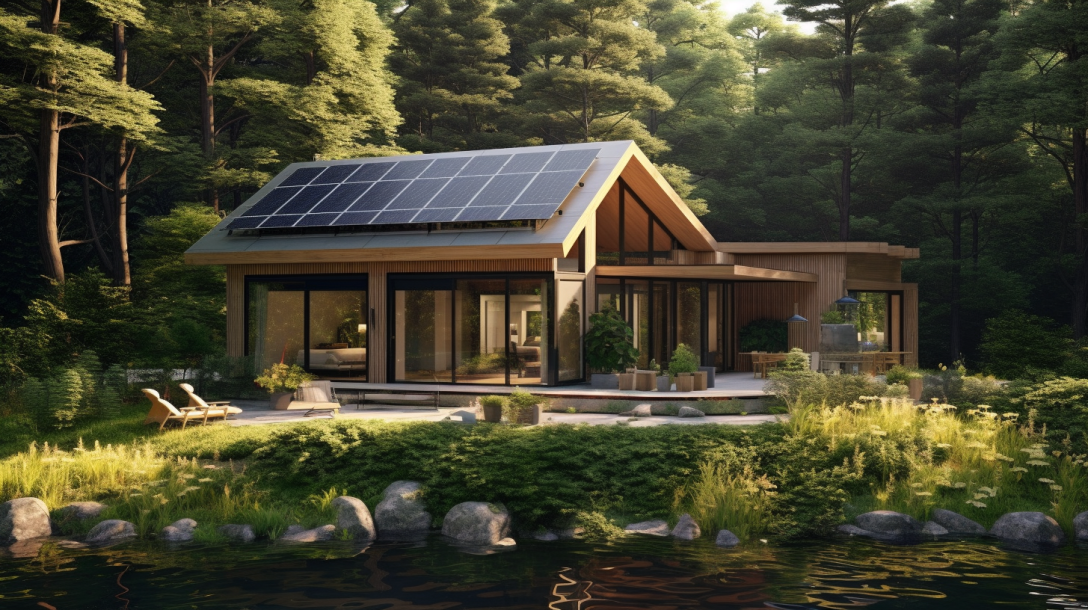Building an Off-Grid House: A Comprehensive Guide to Sustainable Living

Introduction
In an era where sustainability and self-sufficiency are more than just buzzwords, building an off-grid house has become an appealing prospect for many. The idea of living in harmony with nature, reducing our carbon footprint, and being independent of utility companies is both exciting and empowering. This blog post will guide you through the process of designing and building an off-grid house, focusing on power efficiency, water autonomy, waste management, and connectivity.
Power Efficiency: Designing an Energy-Smart House
The first step in building an off-grid house is designing it to be as energy-efficient as possible. This involves careful consideration of the house’s orientation, insulation, and the materials used. The goal is to minimize heat loss in the winter and keep the house cool in the summer, reducing the need for artificial heating and cooling.
Solar Power: Oversized Panels and Batteries
Solar power is the most common source of energy for off-grid living. However, during winter months, the amount of sunlight is significantly reduced. To overcome this, it’s advisable to install oversized solar panels that can generate excess power during sunny days. This surplus power can be stored in batteries for use during cloudy days or at night.
Currently, Lithium Iron Phosphate (LiFePO4) batteries are the preferred choice for their longevity, safety, and efficiency. However, the world of battery technology is rapidly evolving, so it’s worth keeping an eye on emerging technologies that might offer better performance or value.
Alternative Heating Solutions: Wood Burning
While solar power can cover most of your energy needs, it’s wise to have a backup heating solution for those particularly cold winter nights. Wood-burning stoves or fireplaces are a popular choice due to their efficiency and the cozy atmosphere they create. They also provide a use for fallen branches or other wood debris found on your property.
Water Autonomy: Rain Collection and Purification
Water is a vital resource, and achieving water autonomy is a significant step towards off-grid living. Rainwater collection systems, which capture and store rainwater, are a common solution. However, rainwater isn’t safe to drink without treatment. Therefore, a purification system is necessary to remove any contaminants and make the water safe for human consumption.
Solar Water Heating and Heat Storage
Solar water heaters are an efficient way to heat water using the power of the sun. They can be used for bathing, washing dishes, and other household tasks. Additionally, hot water can be stored in insulated tanks and used as a heat source during colder periods, further increasing the efficiency of your off-grid house.
Vegetal Wastewater Treatment
Managing wastewater is another crucial aspect of off-grid living. One innovative solution is vegetal wastewater treatment, which uses plants to filter and clean wastewater. This method is eco-friendly and can turn waste into a resource by irrigating and fertilizing your garden.
Connectivity: Internet with Starlink
Living off-grid doesn’t mean you have to be disconnected from the world. Thanks to services like Starlink, you can have high-speed internet in even the most remote locations. This satellite-based service is a game-changer for off-grid living, allowing you to stay connected with the rest of the world.
Conclusion
Building an off-grid house is a journey towards sustainability and independence. It involves careful planning and a commitment to a different way of life. However, the rewards - both for you and the planet - are immense. With the right design and technology, you can create a home that is not only self-sufficient and eco-friendly but also comfortable and modern.